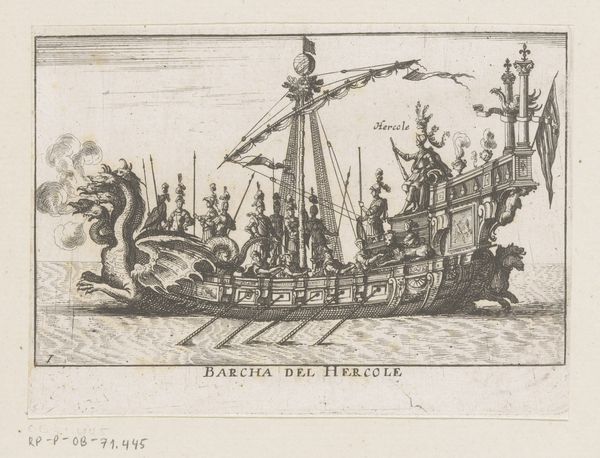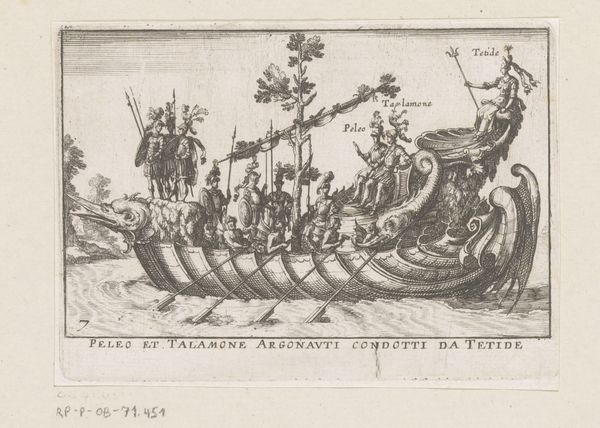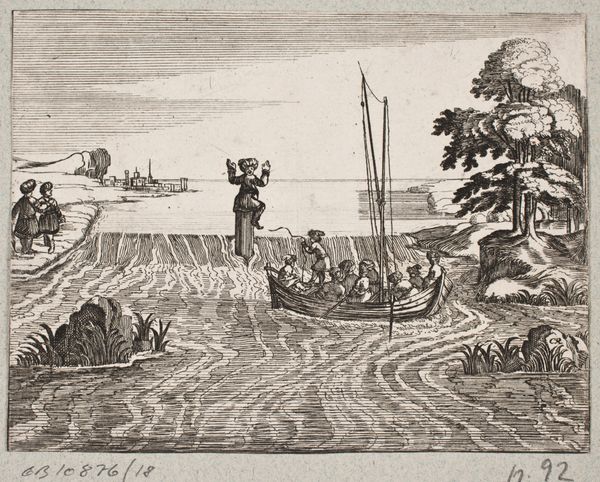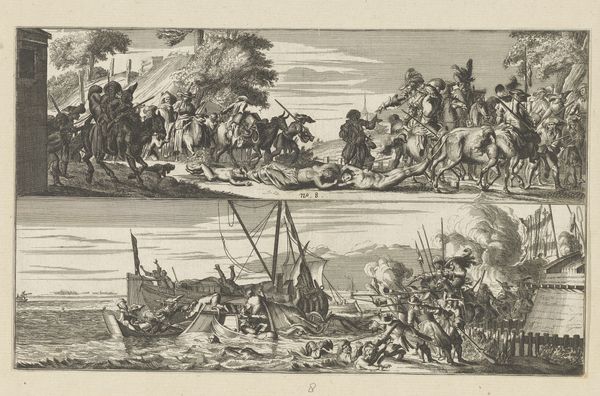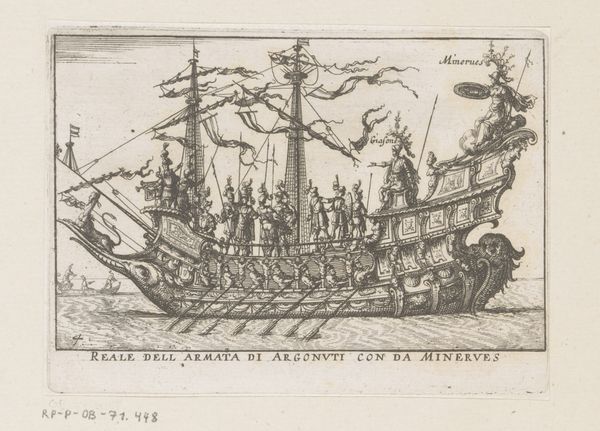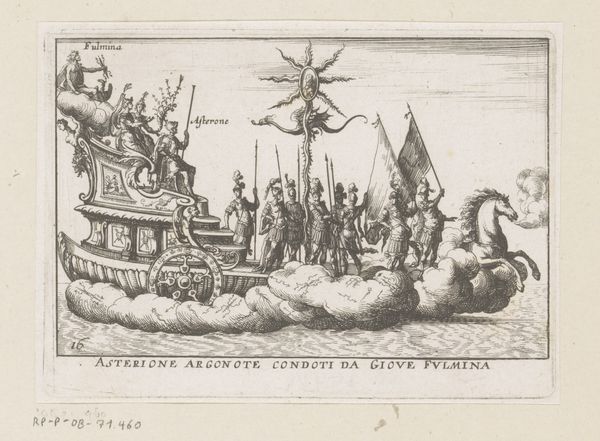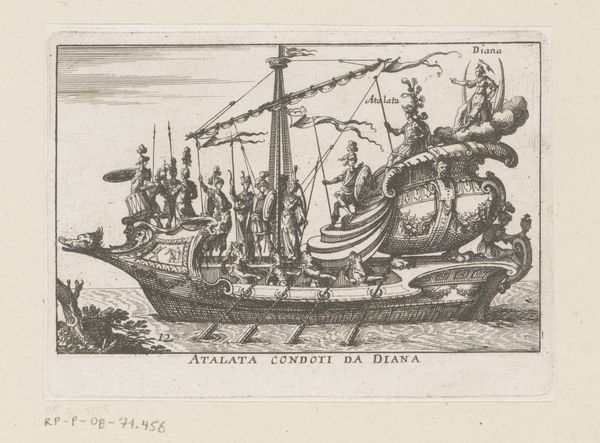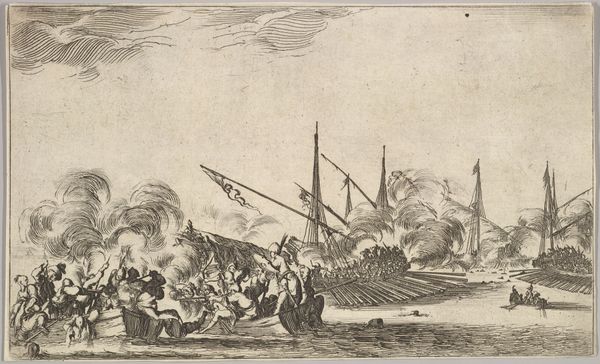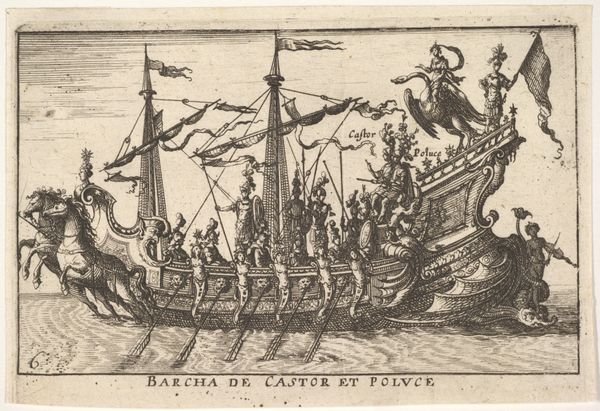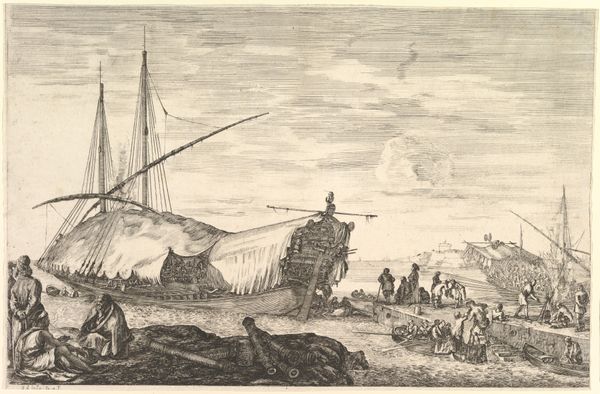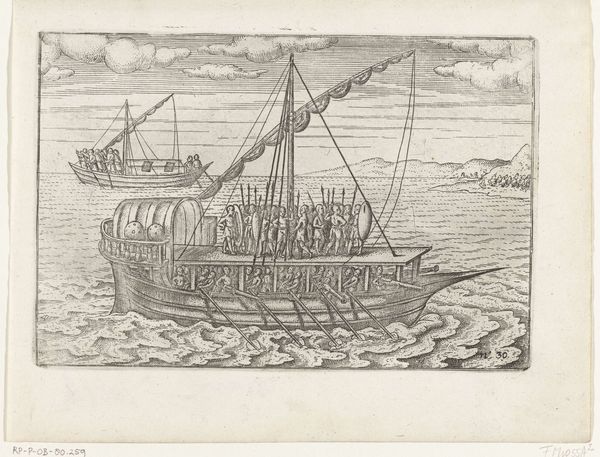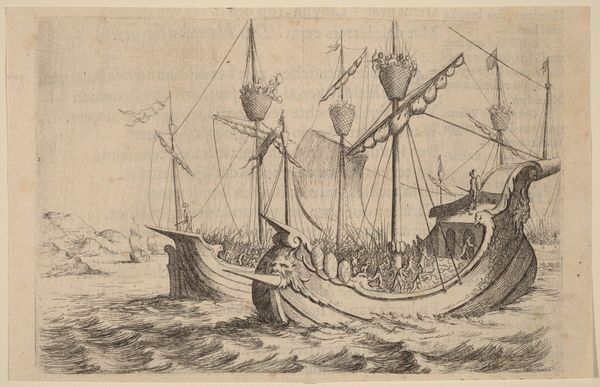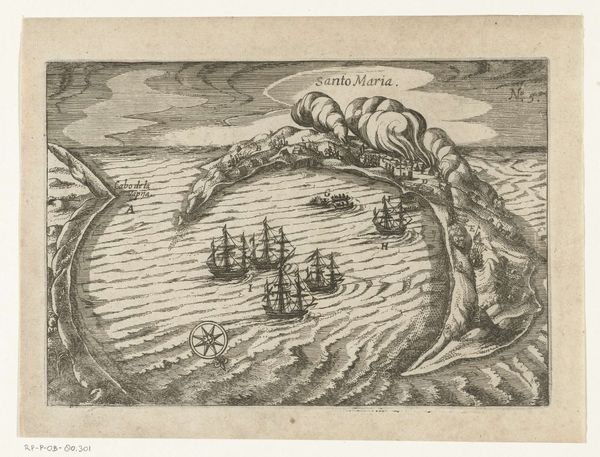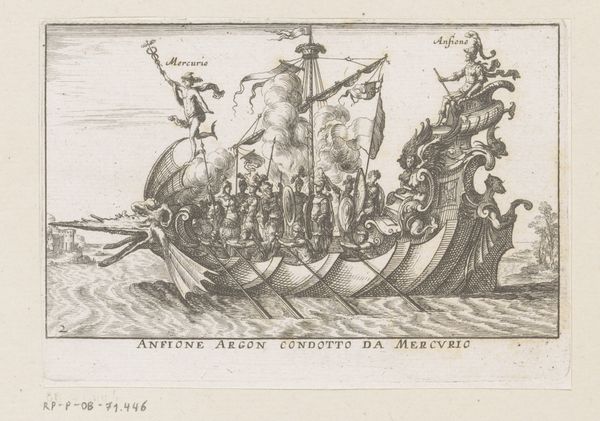
Peleus and Talamon, from the series 'Vessels of the Argonauts,' for the wedding celebration of Cosimo de' Medici in Florence, 1608 1608
0:00
0:00
drawing, print, engraving
#
tree
#
drawing
#
ship
# print
#
pen sketch
#
11_renaissance
#
men
#
history-painting
#
italian-renaissance
#
engraving
Dimensions: Sheet: 7 5/16 × 10 13/16 in. (18.6 × 27.5 cm) Mount: 9 5/8 × 14 3/8 in. (24.5 × 36.5 cm)
Copyright: Public Domain
Editor: This engraving, "Peleus and Talamon, from the series 'Vessels of the Argonauts,'" was created in 1608 by Remigio Cantagallina. The level of detail is captivating, but the composition also feels a little stiff to me. What is your reading of this piece? Curator: Observe the composition of the ship itself. Note the meticulous detailing of the hull, adorned with sculpted sea creatures at the bow and stern. These embellishments serve not merely as decoration but as integral components of the vessel's structure, harmonizing form and function. Do you see how the vessel has these sculpted mythological figures to echo the power of its historical references? Editor: Yes, it's really striking, particularly in contrast to the comparatively simple oars. I wonder why the tree was chosen as the mast of the boat. Is that some comment on classical forms? Curator: That’s an astute observation. The integration of natural forms—the tree used as the mast, for example—reveals a fascinating interplay between organic and constructed elements. Focus instead on the spatial relations created by these choices. How does it influence the perception of depth and scale? How would the symbolic tree trunk affect the composition, versus a fabricated pole? Editor: It creates an interesting tension. The tree does soften the ship, creating this play between rigid lines and natural, organic forms. The texture is incredible. It sounds like there are layers of choices affecting form that I was ignoring. Curator: Precisely. The artwork presents an intentional disruption of traditional modes of representation. Think how the linear precision and detail play with form itself! Editor: It gives me a new appreciation for the piece as a whole. Thank you. Curator: It's the meticulous attention to structural components that invites deeper reflection. Thank you for engaging!
Comments
No comments
Be the first to comment and join the conversation on the ultimate creative platform.
